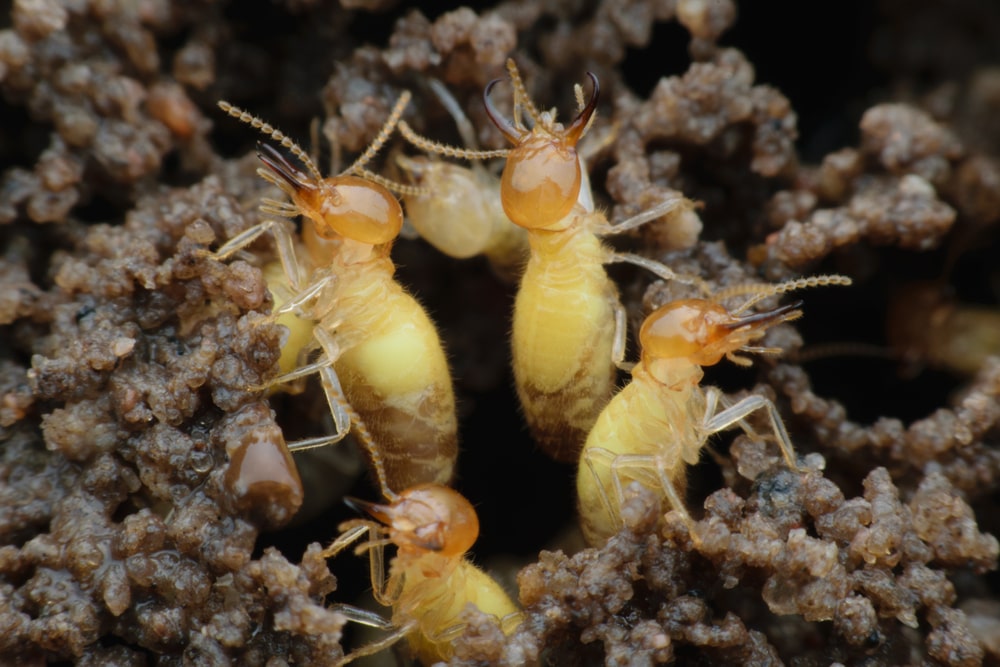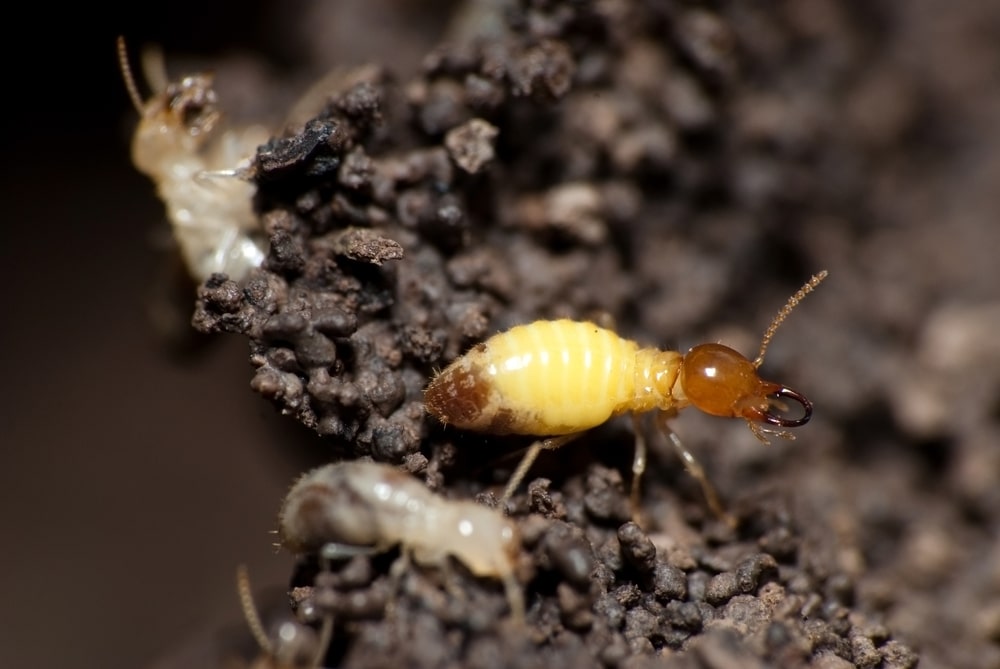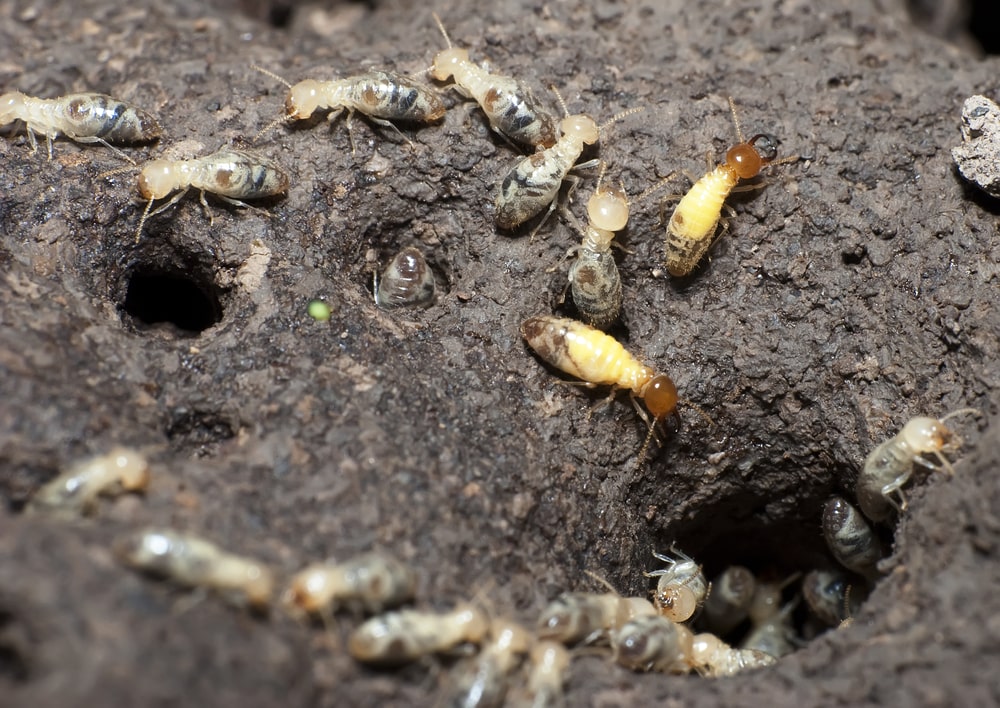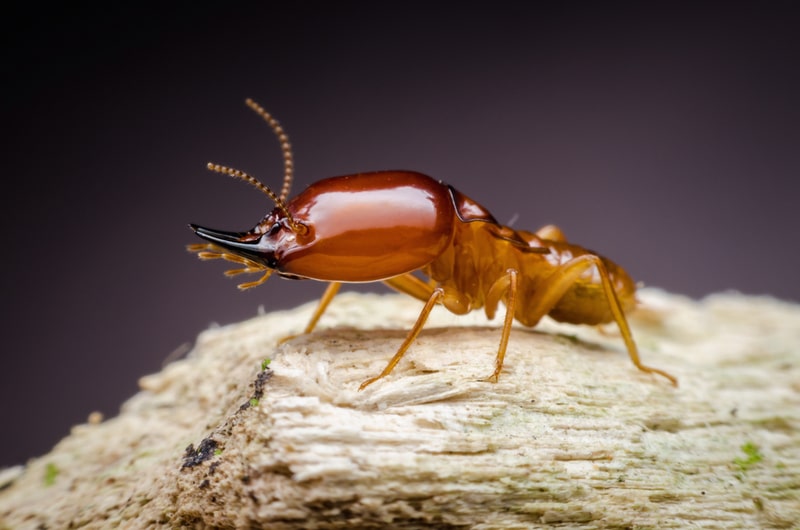Contributed by: Doug Webb
Updated on: January 20, 2023
Formosan termites are a highly-destructive species of subterranean termite. These termites impact many areas in the Southeastern portion of the continental United States, as well as Hawaii. Known for their insatiable appetite for cellulose found in wood, paper and even clothing, Formosan termites are responsible for over $1 billion in property damages each year. Formosan termites have the largest colonies of all termite species, with a single colony potentially harboring up to several million members.
Formosan termite characteristics
There are three different castes of Formosan termites, each with its unique role within the colony. These castes include Formosan worker termites, soldiers and reproductives. Reproductives include the primary king and queen, secondary reproductives which can develop without growing wings and swarming, and winged reproductives, called "alates" or "swarmers" which swarm out of the colony in large numbers each year to start new colonies. The primary and secondary queens lay eggs within the colony to build and sustain the colony
What do Formosan termites look like? A Formosan termite's appearance depends on its caste, however, there are several general characteristics common to this species:
- Straight antennae
- Mandibles
- A body comprised of a head, thorax and abdomen
- Six legs, all of which are attached to the thorax
- Aggressive behavior
At a more granular level, there are certain identifying characteristics for each caste of Formosan termite.
- Size: The typical Formosan termite alate (i.e., winged termite, or swarmer) measures around one-half of an inch in length, wings included.
- Color: Formosan termite swarmers are yellowish-brown, while Formosan workers are opaque white. Formosan termite soldiers have pale, opaque bodies with a contrasting amber-colored head.
- Wings: Reproductive alates are the only caste of Formosan termite with wings. Once they establish a new colony, they shed these wings.
- Shape: Formosan termite soldiers have larger heads than other members of the colony. As the protectors of the colony, they use their mandibles to fend off predators.
Because all termites are so small, it can be difficult for the average homeowner to get up close to properly identify these pests. Because different species of termites have different behaviors, it's best to leave identifying them to the professionals.
A knowledgeable Terminix termite control specialist can more accurately pinpoint the type of termite at the heart of your infestation and recommend a more targeted treatment plan.
Schedule free termite inspection

Formosan termite behavior
Formosan termites are always hungry, and they eat through a lot of wood. They don't care if it's a dead tree on the ground, a live tree in your yard or the wooden structural components of your home. With potentially more than 10 million mouths to feed in a single colony, Formosan termites actively seek out a substantial source of food – and that's a 24/7, 365-days-a-year operation.
Formosan termite workers are the colony members that seek out, masticate and digest the cellulose found in wood. They then feed the entire colony by a process called “trophallaxis." They digest and regurgitate the digested materials for the other colony members to eat.

Termites are basically blind. They seek out wood or any other source of cellulose in a random manner. They expand their search from their nest until they bump into an acceptable food source.
They are able to distinguish between light and dark, which is all they need to know for their safety. If they stay in the dark, they are safe from predators and able to maintain moisture in their fragile bodies. Light means danger.
Mud tunnels, also known as shelter tubes or mud tubes, enable Formosan termites to maintain the temperature and humidity of their environment. These tunnels also help keep them hidden from ants, spiders and other predators that may come looking for trouble. Everywhere they go, Formosan termites build mud tunnels for safe travel, even below ground where their nest and many foraging tunnels are located.
Formosan termite habitats
Although Formosan termites are most commonly found throughout the Southeastern portion of the U.S., they originated from Formosa, the main island of Taiwan. Following World War II, they made their way into U.S. port cities, having hitched a ride by infesting wooden cargo crates.
From there, they made their way inland, thriving in the warmer climates of such states as Louisiana, Florida, Texas, Alabama, Georgia, Mississippi, Tennessee, North Carolina and South Carolina. Formosan termites expanded their turf to include California on the West coast, as well as Hawaii.

So, what attracts Formosan termites and makes an area hospitable to them? When Formosan termites find larger sources of wood, such as the substructure of a home, they work on the surface first. The mud tunnels are easy to see when constructed on the surface of wood, but they usually remain hidden inside walls or behind other materials within the structure.
As they continue to feed, they bore into the wood where they do not need to build mud tunnels. The wood protects them while they feed, as long as they leave the surface intact. They take mud with them wherever they go to plug holes that may open up as the wood is destroyed, which is another sign of infestation.
Formosan termite damage
Wood that has been attacked by Formosan termites may appear wavy on the surface. This is referred to as a “ribbed effect" that is created as they eat the softer part of the wood growth rings, leaving the more dense part of the ring behind.
Due to the large size of their colonies, Formosan termites can cause more damage to a structure in a shorter period of time. Although they are a subterranean termite, some Formosan termites can start aerial colonies if the conditions are right. For instance, buildings with flat roofs collect rainwater and create the moisture-rich conditions Formosan termites need to thrive above ground level.
Formosan termites can damage the structural integrity of a building in their relentless pursuit of cellulose. However, Formosan termites can also harm plants – which also contain cellulose.
Formosan termite treatment
Enlist the aid of a qualified Terminix termite control professional to confirm you're dealing with these pests and who can capably recommend the right Formosan termite treatment.
When you schedule a free Terminix consultation, a trained professional will inspect your home to confirm the culprits at the root of your infestation. If Formosan termites are present, they'll recommend a multi-faceted treatment solution to help tame your termite problem.
Formosan termite prevention and control
While it's always best to contact an expert termite control specialist if you suspect Formosan termites are at work on your home, there are a few preventive measures you can take to help keep these pests at bay:
- Use wood that is pressure treated with preservatives. This wood is more resistant to attack by termites.
- Address moisture issues in your home. Typical problems include leaks, plumbing, condensation and drainage issues.
- Eliminate any areas where wood touches soil in, on and around your home. Keep firewood, lumber and other wood debris away from the foundation of your home.
- Schedule regular termite inspections for your home.
If you see termite mud tunnels, wood in your home that has a wavy or “ribbed" appearance on the surface or other evidence of termites, call a termite professional to inspect and confirm your suspicions. Formosan termites can damage wood at a much faster rate than the more common eastern subterranean species. They are highly aggressive feeders and their colonies may have five to seven times as many members as eastern subterranean termites.
Formosan termites can cause extensive damage to a home if left unchecked. If you see evidence of termites, call Terminix® to stop them in their tracks.



